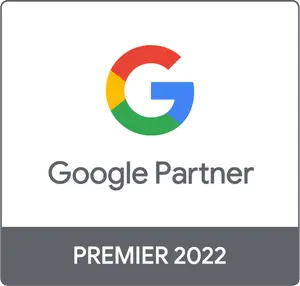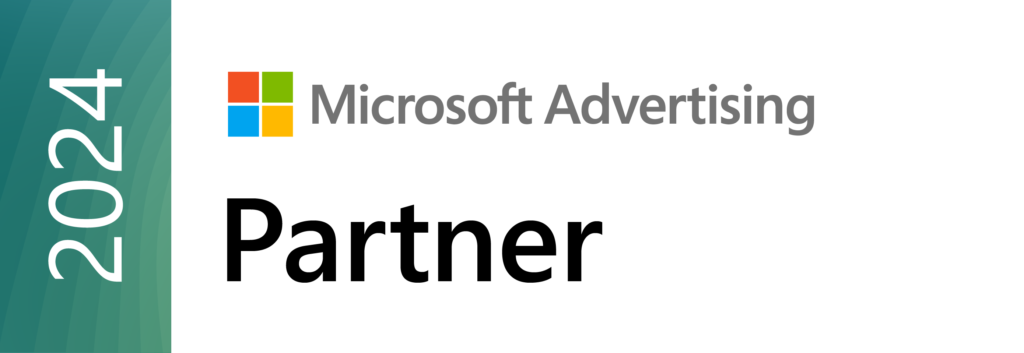The main function of the Paid Media, in its digital version, is to serve as a support for advertising a brand. Through different strategic actions The visibility of a product or service is enhanced among large groups of users or a very specific audience.
To understand this discipline and incorporate it into our overall marketing plans, it's essential to understand the basic concepts, terms, and functions of paid media.
Below, we summarize 10 important paid media terms you may not have heard of. Shall we begin?
*NoteEvery day, new English meanings are added to our marketing repertoire, leaving no time to find a literal translation that captures the entire meaning we want to express in the original language. For this reason, you'll see that for almost all terms, we use the original Anglicism.
1. Impression Share (IS)
Impression share.
-
Definition: It is the percentage of times your ads appear on Google for a keyword out of the total searches for that keyword.
-
Using Impression Share (IS)First, this metric helps us understand the visibility of our keywords, to quantitatively determine whether or not we're appearing enough in our clients' searches. It also helps us understand our market share. If, for example, we have a 100% IS, it means our keyword has become saturated and we'll need to look for another one.
-
Example: Each person who searches for "bilingual school in Madrid" gets different results with different ads. If out of 4 searches for "bilingual school in Madrid," our ad appears 3 times, we'll say our SI is 75%
2. Optimization Score
Optimization level.
-
DefinitionOptimization Score: The optimization score is an automatic, real-time estimate of your Google Ads account's potential performance. Ranging from 0% (very low potential) to 100% (optimal potential), the tool will show you the most appropriate recommendations to help you achieve maximum optimization for your campaign.
-
Using the Optimization Score: If you want to take full advantage of your Google Ads account, we recommend checking your optimization level at least once a week and applying the recommendations to achieve your KPIs and business goals.
-
Example: If we apply an improvement to the 15% recommended by our Google Ads account by applying new keywords, the optimization level will increase proportionally by 15%.
3. Attribution Model
Attribution model.
-
DefinitionThis is probably one of the most used concepts in digital marketing, but probably one of the most misunderstood. Simply put, the attribution model is a set of rules that assign a certain value to the different channels a user has navigated through before taking an action we interpret as a conversion (purchase, registration, download). There are different attribution models depending on the different actions the user takes during their customer journey: the last interaction or last click model, the first interaction model, the linear model, etc.
-
Using the Attribution Model: It provides quantitative information to determine which are the most important and priority channels in which to continue investing.
-
Example: The journey a user takes to book a hotel for their vacation is much longer, in terms of time and channels, than the journey another user takes to order food delivery.
4. Cross-device attribution
Cross-device attribution
-
Definition: If traditional attribution, as discussed in the previous point, assumes that all ad exposure occurs on the same device, cross-device attribution takes into account that a single user often has access to multiple devices on which interaction with the content may occur.
-
Using Cross-device attribution: Cross-device attribution assigns a value to each device in the purchasing journey, allowing agency teams and advertisers to better understand their consumers’ behavior and invest their budgets more wisely.
-
ExampleIf we're working on a conversion campaign for a hotel chain, it's ideal to work with both mobile and desktop traffic. In the early stages of the funnel, where we're looking for new users, we'd give more importance to mobile traffic, as there's a higher volume and the CPC (cost per click) is lower.
5. Pixel Conversion
Conversion pixel
-
DefinitionA conversion pixel is a JavaScript code placed on a website. This "invisible image" allows users to track their behavior on the website and link them to paid media campaigns. This pixel allows you to determine which users clicked on a specific ad campaign, which pages they visited, whether they added a product or service to the payment gateway, and other important actions for advertisers.
-
Using the Conversion Pixel: Essential for optimal tracking of digital advertising campaigns and for accurately calculating ROI. For many advertisers, the phrase "no pixel, no party" is true because running a flawless campaign is pointless if the pixel installation isn't done correctly, as it won't yield data that would allow for drawing conclusions for future campaigns.
6. View through conversions (VTR)
Complete Viewing Rate
-
Definition: refers to the percentage of users who watch a video ad to the end compared to users who have the ad active on their device. It's primarily used in campaigns with video as the main content.
-
Example: If 200 people come across an ad for a children's summer camp on YouTube and 10 of them watch the video to the end, we would say the VTR will be 5%
7. Assisted conversions
Assisted conversions
-
DefinitionThese are the sources through which a sale receives "help" from another source to complete it. That is, even if we see in our data panel that a sale was attributed to a Google Ads campaign, it's very likely that the user was previously impacted by another remarketing campaign or performed an organic search, and that it wasn't until the third or fourth impact that they actually converted.
-
Using Assisted Conversions: By analyzing this feature, we can determine exactly which channels contribute to completing a sale. We'll know which "paths" our users follow: whether they start from social media or organic searches, and therefore, we'll be able to decide which channel to strengthen.
8. Experiments
Experiments
-
DefinitionPreviously called "drafts and experiments," this Google Ads feature allows advertisers to conduct controlled experiments and determine whether a change in campaign strategy would improve results. Additionally, once the experiment is complete, Google Ads allows advertisers to apply the draft/experiment data to the original campaign if the results after comparing the two strategies are positive.
-
Using ExperimentsOptimizing a Google Ads campaign can require analyzing a large amount of data, which is time-consuming and requires trial and error. By setting up the experimentation tool, you'll be able to quickly measure results and implement changes more quickly.
9. Dynamic Search Ads (DSA)
“Dynamic Search Ads”
-
DefinitionDynamic Search Ads are a type of campaign that allows you to automatically expand your keyword inventory. This feature also establishes the most suitable URL for each search term based on Google's criteria.
-
Uses of DSAs: They are a very effective method for discovering new keywords and introducing them into campaigns.
10. Remarketing List Search Ads (RLSA)
Remarketing lists for search ads
-
DefinitionRLSAs were launched in 2013 and represented a radical change for advertisers and brands. RLSAs are an advanced remarketing feature that allows you to personalize search ad campaigns for users who have previously visited your site, and tailor your offers and ads to these visitors when they search on Google and search partner sites.
-
Use of RLSAUsing RLSA as an accelerator for paid media campaigns will ensure that users who have already interacted with your website will receive another advertising impact tailored to their current funnel stage, increasing the likelihood of conversion.

Founder of PaidStrategy and Performance Marketing Specialist.
Over 10 years of experience in Performance Marketing. Expert in achieving goals through analysis and strategy management with internal teams and clients. Her two superpowers? Asking the right questions and moving from chaos and improvisation to order and planning.






